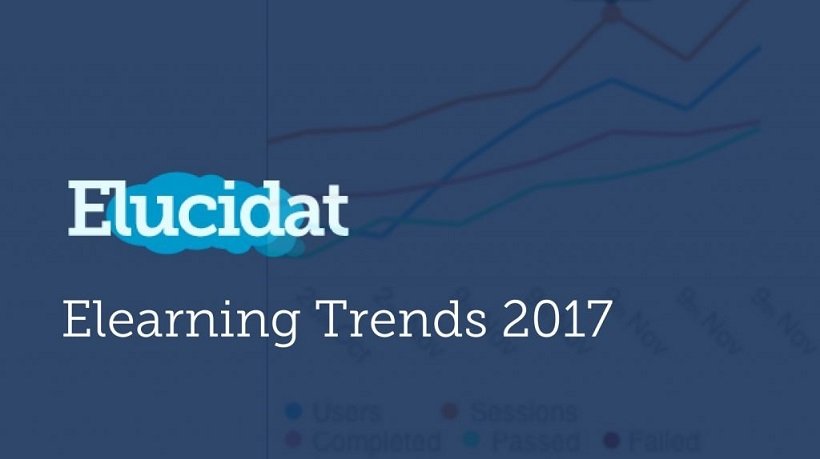Discover The Popular eLearning Trends
The relentless march of technology has caused online learning to emerge as a potent force, transforming how knowledge is delivered and consumed worldwide. In the initial years, when the concept of eLearning emerged, it was considered to be a supplementary tool for conventional classrooms, but things have changed significantly over the past few years. During the pandemic, online learning reached its peak since there were no other alternatives available for students, leading to the rise of several popular eLearning trends.
Unlike traditional education models, online education is flexible, cost-effective, and accessible. These are some of the reasons why many students these days are considering online learning over conventional learning approaches. However, online education has changed a lot these days due to the introduction of advanced technologies and changing societal demands.
Popular eLearning trends like personalized learning, the growth of Virtual Reality (VR) and Augmented Reality (AR), game-based learning, microlearning, mobile learning, and many others are revolutionizing eLearning in more ways than one, and all for good reasons. It's expected that these online education trends will continue in the coming years. This article highlights the key trends driving the future of online learning while also shedding light on innovations and technologies.
Emerging Trends In eLearning: A Comprehensive Guide
Let's explore the prevailing popular eLearning trends of 2025:
1. Rise Of Personalized Learning Due To AI And Machine Learning
Undoubtedly, this is the most significant trend on the horizon, considering the immense potential of Artificial Intelligence (AI) and Machine Learning (ML). The integration of AI in online education customizes learning experiences and helps students to address their unique needs. To be precise, AI and ML are enabling educators to personalize content based on a student's learning approach, pace, and preferences.
2. Immersive Learning With The Growth Of Virtual And Augmented Reality
The blending of AR and VR in online learning is changing the way students are accustomed to learning. It goes many steps further to create an immersive learning experience while helping students engage with the topics in a fun and interactive way.
The integration of VR helps students to explore virtual worlds and provides practical learning experiences that are absent in traditional educational methods. For instance, students studying history can step into ancient civilizations, while medical students can perform virtual dissections using VR simulations. On the other hand, AR elevates students' learning experiences by making abstract concepts tangible. For example, anatomy students can use AR to visualize the human body in 3D.
3. Gamification
Teachers conducted games in classrooms long before online education became popular. But gamification has pushed this idea even further. Adding game-based elements to learning, such as badges, leaderboards, or reward systems, helps learners stay focused, motivated, and more involved. This approach delivers an interactive learning experience and encourages students to work together. It also gives learners a chance to team up and work towards a common goal.
4. Microlearning
Microlearning is all about breaking down difficult topics into small lessons. Bite-sized lessons are easy to grasp and can be completed within a short period. Mostly, these short lessons start with humor or a surprising fact so that learners get hooked. Also, these lessons comprise short videos, infographics, and interactive quizzes. A unique trait of this learning approach is that it focuses on a particular skill at a time. The lessons don't have any unnecessary information, which makes it easier for students to learn the concepts.
5. Mobile Learning
The rise of smartphones and tablets is the primary reason behind the widespread adoption of mobile learning. In the coming years, mobile-led platforms are anticipated to receive all the limelight. Hence, learning experiences must be optimized for mobile while incorporating quizzes, downloadable content, and videos.
Mobile learning allows students to access course modules, participate in discussions, and finish assignments from anywhere at any time. This flexibility is indeed a boon. Learners can fit study hours into their busy schedules, whether they're commuting, traveling, or working full-time.
6. Live Interactive Classes
Although recorded lectures have their advantages, live interactive classes are becoming more popular due to their flexibility, convenience, and individualized learning experiences. Students can interact with instructors directly and experience real-time engagement when they take part in live interactive classes.
7. Blended Learning Models
Online education lacks some of the advantages of traditional learning, and vice versa. Blended learning offers the best of both educational models by combining the benefits of online and in-person instruction. This hybrid model enables learners to engage with content through interactive tools and video lectures. Blended learning encourages independence and collaboration and prepares students for any real-world challenges.
8. Intelligent Tutoring Systems
Intelligent tutoring systems serve as virtual guides and provide mentoring to learners on a one-to-one basis. They are immensely beneficial when it comes to diagnosing knowledge gaps and providing feedback.
More importantly, these tutoring systems operate round-the-clock and are a good option for students who require external help. If a learner resides in remote or underserved areas, they can also rely on these systems. Nowadays, intelligent tutoring systems have become more conversational and can simulate a human-like interaction, thanks to advancements in Natural Language Processing (NLP).
9. Data And Analytics
It isn't an exaggeration to say that data is the king for any business these days. The implementation of Big Data and learning analytics is transforming how educators look at the performance evaluation of students. They tailor learning experiences and also hold the potential to predict future trends. Learning analytics are helping eLearning platforms and educators to get details of learner engagement. These platforms leverage predictive analytics and scenario simulators to customize instructions based on student strengths and weaknesses.
10. Video-Assisted Learning
Videos are an excellent learning tool, and they continue to grow in popularity in the academic community. Online learning relies heavily on videos and other visual media to convey knowledge to students. A major benefit of video learning is that learners can access these educational videos at any time and watch them when they have no other work. It's more convenient than attending online classes.
Conclusion
These emerging popular eLearning trends are opening up new opportunities for customized learning, better engagement, and more effective teaching methods. It's very difficult to predict where these trends will lead. They will likely be more advanced in the future, and their impact on eLearning will be more profound. It's clear that educational technology is here to stay, and adopting these trends is the only way to stay relevant.








